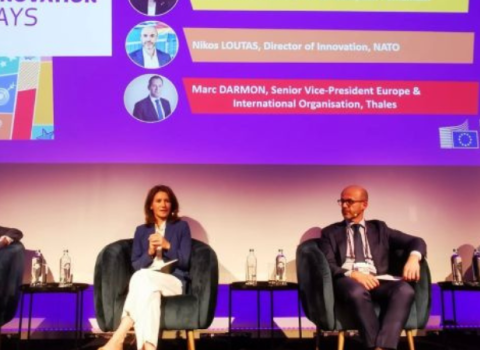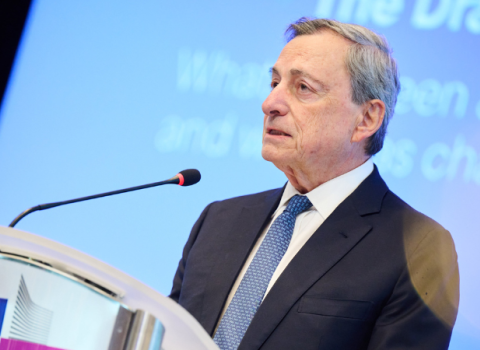A tussle between policy-driven and bottom-up research will shape Framework Programme 10. There are two years to have the debate and strike a balance. ‘This is the beginning of the conversation,’ says Marc Lemaître

The European Commission’s research and innovation chief Marc Lemaître. Photo: Christophe Licoppe / European Union
The European Commission’s research and innovation chief Marc Lemaître says it’s time to begin the conversation on the next EU research programme, which is due to start in 2028. “We do need to reflect very hard on the focus of the future framework programme,” he said.
The research community is ready to talk. Earlier this week, members of the European Parliament began advocating for a €200 billion budget for the tenth framework research programme. That’s more than double the current €95.5 billion Horizon Europe budget.
But there are strategic issues to work through too. Lemaître emphasised the tension between the proponents of bottom-up research and those wanting a clear focus on applied research that delivers on policy objectives.
As more and more research funding is diverted towards innovation and policy-driven Commission initiatives, such as the Strategic Technologies for Europe Platform (STEP), calls to ring-fence the budget for science have intensified.
At the same time, with the EU setting out ambitious targets for technology sovereignty and green innovation, there’s a clear need for more targeted research and innovation programming.
Lemaître says this is a healthy debate to have, but it needs to be resolved without turning to extremes.
“I do also sense we have not yet found the magic formula to ensure the best creative tension between these two,” he told the EARTO Policy Event and Innovation Awards meeting this week. At some point, some clear industrial ambitions have appeared, which sat uneasily with Horizon Europe as it has been designed, in its architecture,” Lemaître said.
In-depth debates
The Commission is hard at work trying to understand the best way to shape the future EU research programme.
The next milestone is the ex-post evaluation of Horizon 2020, which will give the final ruling on the 2014 - 2020 EU research framework. This should be out by the end of year, Lemaître confirmed. He didn’t go into details on what to expect, but noted a clear need for EU research programmes to be more systematic in delivering impact - and faster to do so.
Next up, the Commission is working on the mid-term evaluation of Horizon Europe, the findings of which will help lay the groundwork for FP10. Alongside the mid-term review, the Commission is setting up a high-level group to provide expert input on how to shape the next research framework.
The Commission proposal for FP10 will be published before mid-2025. “We have there still nearly two years in order to have the in-depth debates which are required. This is the beginning of the conversation,” said Lemaître.
But the EU research programme is only part of the picture in the EU’s attempts to catch up with global research and innovation competition. EU governments and industry must boost investment to create a favourable environment for innovation in the bloc. Promises have been made but investment is still lagging.
At the start of the century, the EU set a goal of investing 3% of its GDP in research and development by 2010. The same goal was once again set in 2020, but today the EU still invests less than 2.3% in research, while countries such as the US, Japan and South Korea have surpassed 3%.
“Europe will need to step up to stay in the global race,” Markus Beyrer, director general of the industry association Business Europe, said at the EARTO event.
Industry must be encouraged to invest more in innovation by creating a better regulatory environment. There’s a lot riding on it: companies today provide close to 66% of the EU’s investment in R&D, and they need the right framework to continue doing so, Beyrer said.
Editor's note: This article has been updated 13 October 2023 to correct the number of Framework Programmes to date.





 A unique international forum for public research organisations and companies to connect their external engagement with strategic interests around their R&D system.
A unique international forum for public research organisations and companies to connect their external engagement with strategic interests around their R&D system.